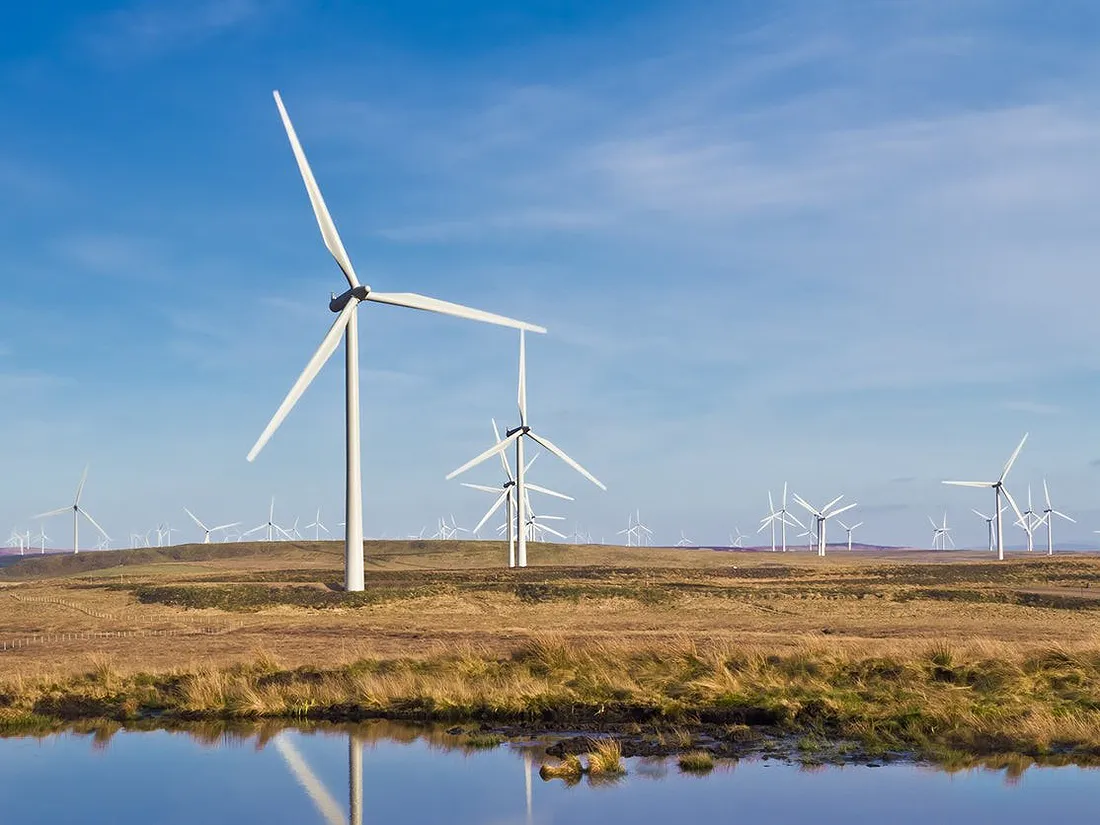NPF4 – A less turbulent future for onshore wind development in Scotland

5 min reading time
Developments in Scottish planning policy are showing a clear and positive impact on the ability of onshore wind developers to advance their projects.
The latest version of the national planning framework, NPF4, came into effect in February 2023. It strengthens the case for onshore wind projects in light of the climate crisis and push towards Net zero by 2050. Decision-makers are now required to prioritise combating these crises over other factors, such as concerns about visual impact or effects on local landscapes, when considering project consent.
Numerous projects have already benefitted from the revised policy, gaining consent where they would otherwise have been rejected under the old policy. It has also encouraged developers to explore sites that were previously deemed unlikely to acquire consent. This shift extends to “repowering” projects, where existing wind turbines are upgraded to enhance capacity or efficiency, facilitating progress towards the UK’s renewable energy targets.
One notable change under NPF4 is the categorisation of large wind farms (exceeding 50MW of installed capacity) as “national developments”, emphasising their importance in meeting national goals. This designation allows for greater support even in areas traditionally considered off-limits by local planning authorities due to landscape concerns.
The impact of NPF4 reforms is evident in recent project approvals, such as the Clashindarroch II Wind Farm and the Shepherds’ Rig Wind Farm. These projects, initially facing refusal, were granted consent following the implementation of NPF4.
NPF4’s biodiversity policy offers flexibility to developers while emphasising the importance of preserving the natural environment. However, the revised policy also imposes conditions to ensure local benefits, prohibits development in National Parks, and retains the authority to refuse projects that may harm the natural environment.

Looking ahead, some aspects of NPF4’s impact on proposed wind development still need clarification, particularly regarding landscape effects and the perpetuity of wind farm use. Additionally, while NPF4 strengthens the case for onshore wind, it’s not an absolute guarantee, and challenges remain, especially concerning significant impacts on designated monuments.
The explicit inclusion of repowering projects in the new policy is welcomed. One aspect of the updated policy asserts that if a wind farm is judged acceptable in a specific location, it is assumed that the site will remain suitable for wind farm development indefinitely. Repowering projects will play a crucial role in achieving Scotland’s renewable energy targets, but careful site selection and mitigation measures are essential.
The policy notably shifts towards assigning areas for Renewable Energy development instead of considering individual sites separately and granting approval with time constraints. This approach should encourage landowners to market their sites to multiple developers through Renewables Connect rather than developers expending resources searching for land on an ad-hoc basis.
The policy change has already led to the approval of several projects that would not have been sanctioned under the previous policy guidelines. It also encourages developers to investigate sites that were previously deemed unlikely to receive consent. Overall, NPF4 presents a positive policy landscape for onshore wind development in Scotland, distinguishing it from the more restrictive policies in England.
Get In Touch

Keir Doe
Founder/Director
+44 7813 138642
[email protected]

Hamish Bottomley
Technical Director
+44 7527 700080
[email protected]